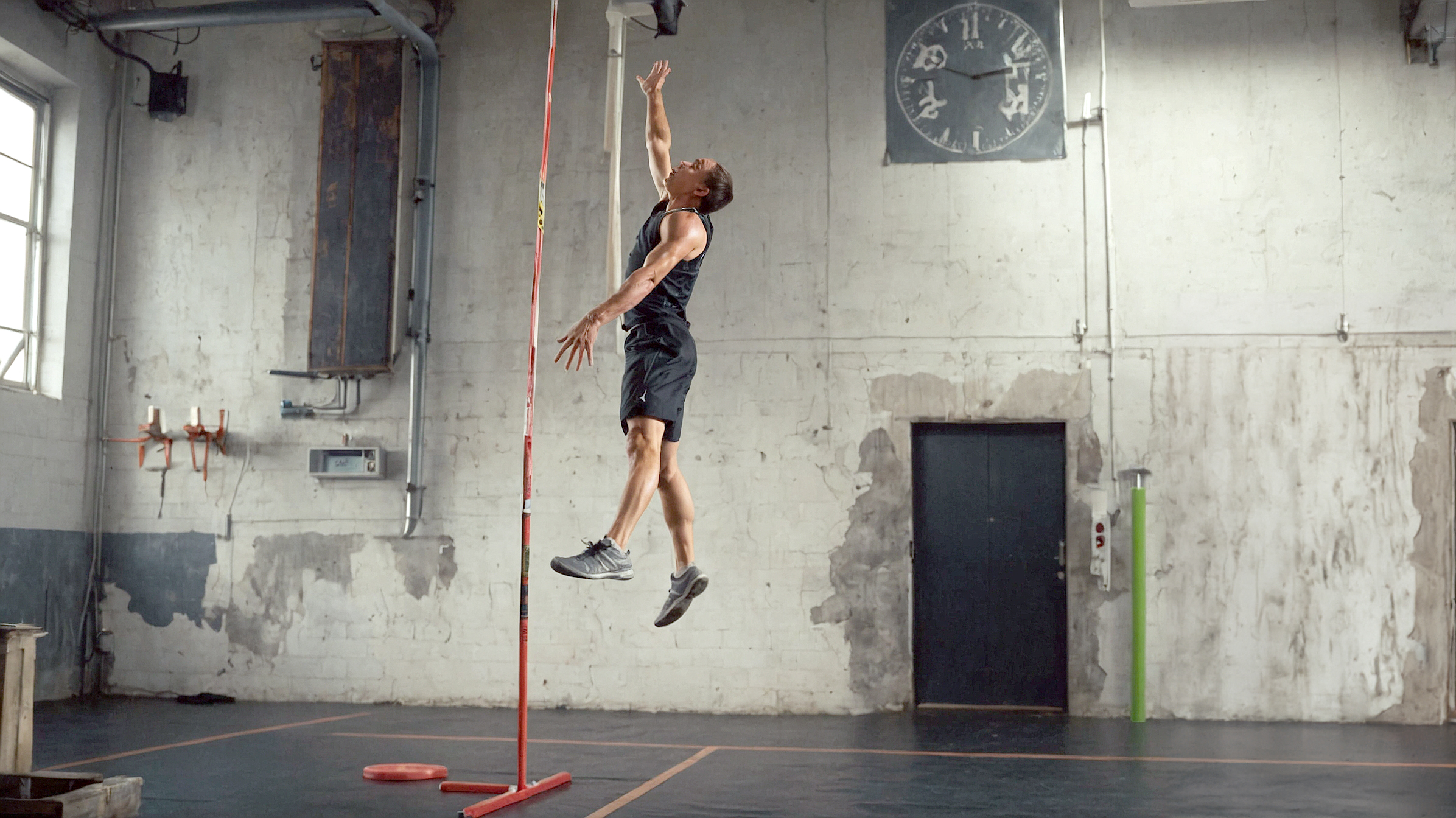Largest Vertical Leap: The Ultimate Guide To Skyrocketing Your Jump!
Imagine this—you're standing on the court, eyes locked on the rim, heart pounding in your chest. Then, with one explosive movement, you elevate higher than ever before, defying gravity and leaving everyone in awe. That's what achieving the largest vertical leap feels like. It's not just about jumping higher; it's about pushing your limits, unlocking hidden potential, and transforming your athletic performance. Whether you're a basketball player chasing dunks, a volleyball star aiming for spikes, or even someone who simply wants to improve their physical capabilities, mastering the art of vertical leaping can change everything.
But here's the deal: increasing your vertical leap isn't as simple as hopping around a few times. It requires dedication, the right techniques, and a deep understanding of how your body works. In this guide, we'll dive into everything you need to know about the largest vertical leap—from science-backed strategies to real-world tips that work. So buckle up, because we're about to take your game to new heights!
Before we jump into the nitty-gritty (pun intended), let’s address why the largest vertical leap matters so much. For athletes, it's a key metric of explosive power and athleticism. A higher vertical leap can make or break your performance on the field or court. But beyond sports, improving your vertical leap can enhance overall fitness, boost confidence, and even reduce injury risks. Ready to learn how? Let’s get started.
Understanding the Science Behind Vertical Leaping
What Exactly Is a Vertical Leap?
A vertical leap is more than just jumping up—it’s a complex movement involving multiple muscle groups, coordination, and timing. Technically speaking, it's the maximum height you can reach above standing flat-footed. The science behind it involves physics, biomechanics, and muscular strength. Your vertical leap depends on factors like leg power, flexibility, body composition, and even technique.
Think of it this way: when you leap, your muscles act like springs. The stronger and more efficient those springs are, the higher you can go. And while some people might naturally have better genetics for jumping, the good news is that anyone can improve their vertical leap with the right approach.
The Physics of Jumping Higher
Ever wondered why certain athletes seem to float in the air? It all comes down to physics. When you jump, you generate force by pushing against the ground. This force propels you upward, creating potential energy that turns into kinetic energy as you ascend. The higher you want to go, the more force you need to exert.
- Force = Mass × Acceleration
- The greater the force, the higher the jump.
- Reducing body weight can also help increase your vertical leap.
By optimizing your strength-to-weight ratio and improving your movement patterns, you can harness the power of physics to achieve the largest vertical leap possible.
Key Factors That Influence Your Vertical Leap
Muscle Strength and Power
Your muscles are the engines driving your vertical leap. Specifically, the muscles in your legs—quadriceps, hamstrings, glutes, and calves—are responsible for generating the explosive force needed to jump high. Building strength in these areas is crucial if you want to see significant improvements.
But here's the twist: it's not just about raw strength. Power, which is the ability to generate force quickly, plays an equally important role. Plyometric exercises, such as box jumps and depth jumps, are specifically designed to enhance power and translate it into better vertical performance.
Flexibility and Mobility
Flexibility might not be the first thing that comes to mind when talking about jumping higher, but it's actually a game-changer. Tight muscles and limited mobility can restrict your range of motion, preventing you from fully utilizing your strength. Incorporating dynamic stretching routines and mobility drills into your training can make a noticeable difference in your vertical leap.
Body Composition
Your body composition directly affects your vertical leap. Carrying excess body fat can weigh you down, making it harder to jump high. On the other hand, having a leaner, more muscular physique can give you a significant advantage. However, it's important to strike a balance—too little body fat can lead to decreased energy reserves, so focus on maintaining a healthy weight that supports your goals.
Training Programs for the Largest Vertical Leap
Plyometric Exercises
Plyometrics are explosive exercises designed to improve power and speed. They involve quick, powerful movements that train your muscles to contract rapidly and efficiently. Some of the best plyometric exercises for increasing your vertical leap include:
- Box Jumps: Jump onto a raised platform to build explosive leg strength.
- Depth Jumps: Step off a box, land softly, and immediately jump as high as you can.
- Broad Jumps: Launch yourself forward as far as possible to enhance lower-body power.
These exercises should be performed with proper form and gradually increased intensity to avoid injury and maximize results.
Strength Training
Strength training is the foundation of any vertical leap improvement program. Focus on compound movements that target multiple muscle groups simultaneously. Here are a few essential exercises:
- Squats: Build quad, hamstring, and glute strength with this classic exercise.
- Deadlifts: Strengthen your posterior chain, which is critical for explosive movements.
- Lunges: Improve unilateral strength and balance for a more stable jump.
Remember to incorporate progressive overload by gradually increasing weights or reps over time to continually challenge your muscles.
Conditioning and Endurance
While strength and power are key, don't underestimate the importance of cardiovascular endurance. Being able to sustain high-intensity efforts repeatedly can make a big difference in your overall performance. Incorporate interval training, sprint drills, and agility exercises to enhance your conditioning.
Measuring Your Vertical Leap
How to Measure Your Vertical Leap
Measuring your vertical leap is easy and can be done with minimal equipment. All you need is a wall, chalk, and a measuring tape. Here's how to do it:
- Stand flat-footed next to a wall and reach as high as you can, marking the spot with chalk.
- From a standing position, jump as high as possible and mark where your hand reaches.
- Measure the distance between the two marks—that's your vertical leap!
Tracking your progress over time will help you stay motivated and adjust your training accordingly.
Norms and Standards
Wondering where you stand compared to others? Here are some general norms for vertical leap based on gender and age:
- Men: Average vertical leap ranges from 16-20 inches.
- Women: Average vertical leap ranges from 12-16 inches.
- Athletes: Elite athletes often exceed 30 inches, with some reaching over 40 inches!
Keep in mind that these are just averages—your personal potential is unique to you.
Nutrition and Recovery for Maximum Performance
The Role of Nutrition
What you eat directly impacts your performance. To fuel your vertical leap training, focus on a balanced diet rich in protein, carbohydrates, and healthy fats. Protein helps repair and build muscle tissue, while carbs provide the energy needed for intense workouts. Don't forget to stay hydrated, as even mild dehydration can impair your performance.
Importance of Recovery
Recovery is just as important as training. Your muscles need time to repair and grow stronger after each session. Prioritize sleep, active recovery (like light stretching or yoga), and proper nutrition to ensure you're giving your body what it needs to perform at its best.
Common Mistakes to Avoid
Skipping Warm-Up and Cool-Down
One of the biggest mistakes people make is neglecting their warm-up and cool-down routines. Jumping into intense exercises without properly preparing your body can lead to injuries. Always start with dynamic stretches and light cardio to get your blood flowing, and finish with static stretches to promote flexibility.
Overtraining
More isn't always better. Overtraining can lead to burnout, injuries, and diminishing returns. Listen to your body and allow adequate rest days to ensure optimal recovery and progress.
Real-Life Success Stories
Athletes with Impressive Vertical Leaps
Some of the most iconic athletes in history are known for their incredible vertical leaps. Take Michael Jordan, for example, whose legendary 48-inch vertical made him a dunking sensation. Or look at current NBA star Zach LaVine, whose gravity-defying dunks continue to amaze fans worldwide.
These athletes didn't achieve their success overnight. They dedicated years to honing their craft, combining hard work, discipline, and smart training strategies to reach new heights—literally!
Everyday Athletes Achieving Greatness
But it's not just professionals who can achieve the largest vertical leap. Everyday athletes and fitness enthusiasts have also seen remarkable improvements through consistent training. From high school basketball players to recreational volleyball players, anyone can elevate their game with the right approach.
Conclusion: Take Your Leap to New Heights
In conclusion, achieving the largest vertical leap is within reach for anyone willing to put in the effort. By understanding the science behind vertical leaping, following a structured training program, and prioritizing nutrition and recovery, you can unlock your full potential and reach new heights—both literally and metaphorically.
Now it's your turn to take action. Share your thoughts, questions, and experiences in the comments below. And don't forget to check out our other articles for more tips and tricks to boost your athletic performance. Let's jump together and make history!
Table of Contents
- Understanding the Science Behind Vertical Leaping
- Key Factors That Influence Your Vertical Leap
- Training Programs for the Largest Vertical Leap
- Measuring Your Vertical Leap
- Nutrition and Recovery for Maximum Performance
- Common Mistakes to Avoid
- Real-Life Success Stories
- Conclusion

Vertical Leap

Vertical leap training East Coast Movement Performance Institute NJ

Why Vertical Leap Is A Great Place To Work Vertical Leap